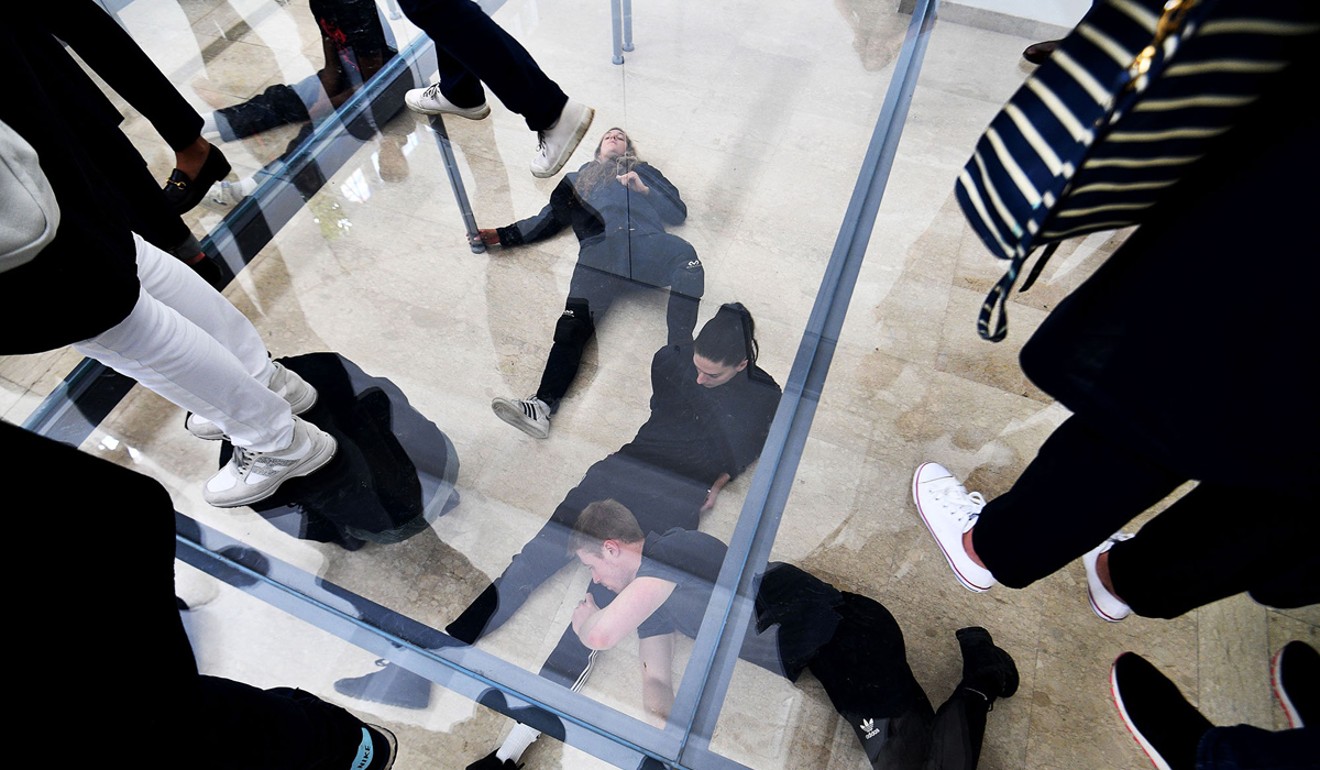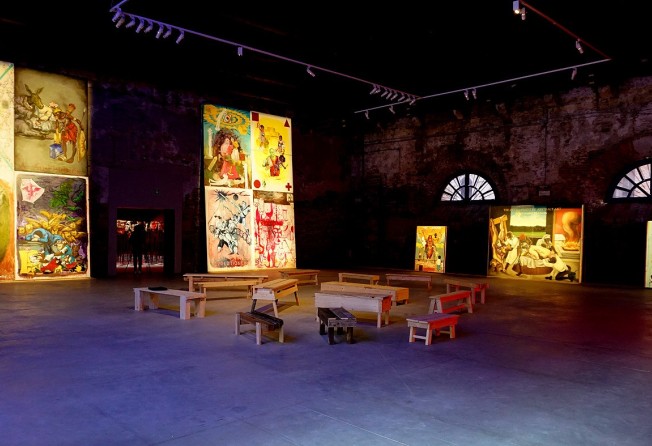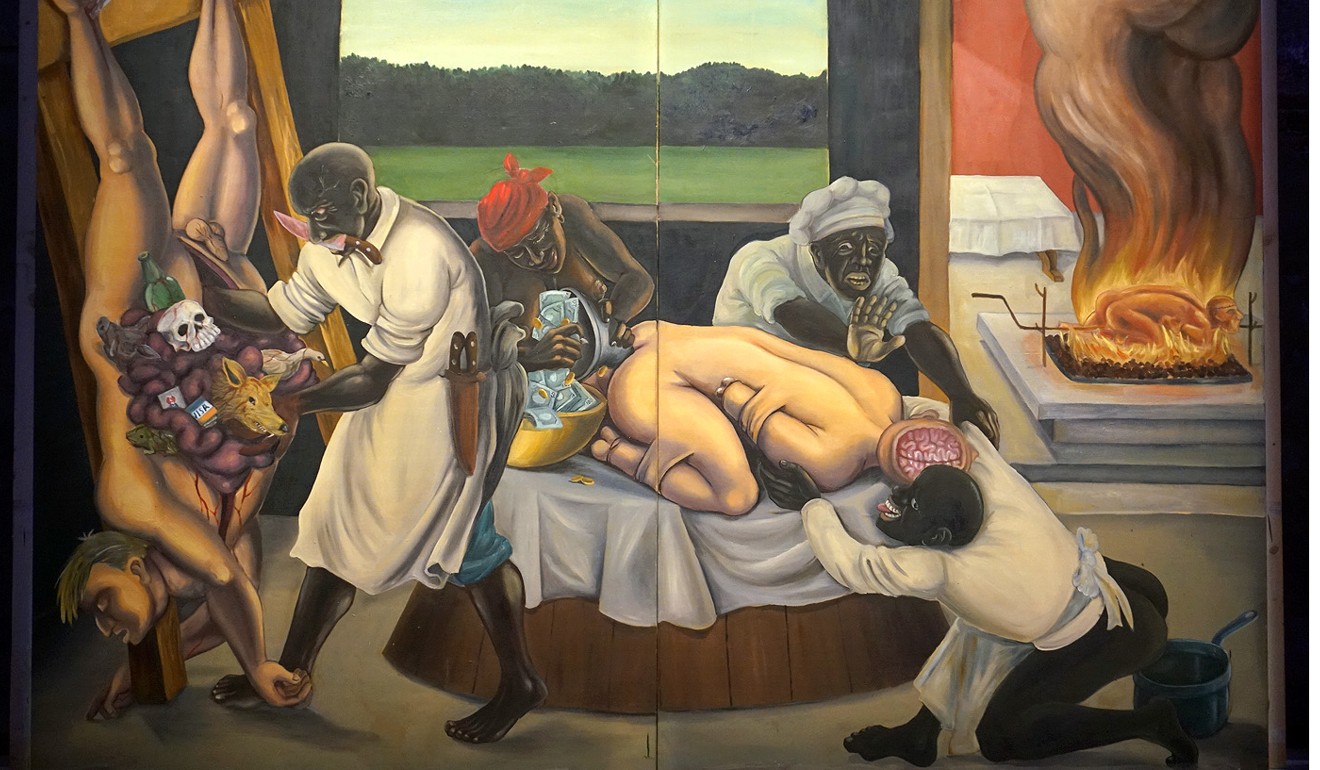
Southeast Asian art at Venice Biennale: the good, the bad and the globalised
The art exhibition’s many pavilions are filled with works from some of Asia’s most famous contemporary artists, and some – not all – installations are worth a look

The unthinkable is happening at this year’s Venice Biennale, a contemporary visual art exhibition held in Italy.
The Southeast Asians are upside down. The Indonesians are drab, the Filipinos uninspiring, the Thai’s merely alright and the Singaporeans – well, the Singaporeans are full of magic, mystery and beauty. What is going on?
Every two years or so, for well over 100 years, Venice – the paradoxical city in a lagoon – hosts the world’s largest such exhibition. This year it runs through November. It’s a vast smorgasbord with work from across the globe, divided into two main components.
First, there is an official exhibition selected and edited by a new curator each time. Housed in the Arsenale (once Venice’s shipbuilding and armaments hub), the show extends over hundreds of hectares against a backdrop of raw concrete, iron and brick. Venice was an industrial power as early as the 1100s and the city’s lavishly decorated baroque palaces and churches were built on the back of a dynamic economy.
Second, there are the national pavilions – many located in the Napoleonic-era Giardini gardens alongside the Arsenale. These pavilions – not galleries – are predominantly European with a smattering of Latin American nations, alongside the Japanese, Koreans and Australians.
The use of the word “pavilion” is critical: it suggests a three-dimensional space that should be filled or curated.
The Venice Biennale isn’t about shoving a few paintings up on the wall. A national pavilion has to be spectacular, immersive – literally a “Sensurround” experience.

In this respect, the German pavilion was a standout, presenting a disturbingly dystopian vision of modern life. Artist Anne Imholtz installed temporary glass walls and floors within the pavilion: creating a strangely unnerving and disorientating environment where the barriers between the audience and the sports-leisure wearing performers shifted continuously.
Apart from the Giardini, the national pavilions are dotted across the city. Some are extremely moving.
Both the Iraqis and Iranians had thought-provoking pavilions that stressed their respective nation’s pre-Islamic traditions. So, what about the Southeast Asians?
As noted, the Singaporean pavilion was supremely elegant and yet enthralling: a hull of a 12-metre-long seagoing craft made from rattan and bound together with beeswax and red cord. Suspended from the ceiling, it evoked the city’s trading roots (not unlike Venice) as well as the shared Melayu-Riau heritage of its people. Created by the erratic but brilliant artist-cum-shaman Zai Kuning, the work is part of an extended personal exploration of Malay identity – digging back into the pre-Islamic Srivijaya roots with a supplementary theme of the Orang Laut (a group of maritime nomads) of the Riau archipelago as well as the mak yong (oral theatre) tradition.

By comparison, the Indonesian and Filipino offerings felt overwrought and contrived. The references to nationalist icon and polymath Jose Rizal and Southeast Asian historian Ben Anderson merely underlined the limitations of the work displayed.
Given the fact that Manila is currently the most exciting creative arts centre in the region, the tired presentation – a few paintings from Manuel Ocampo (his paintings from the 1990s are so much better than his current work) and some sub-Tracey Emin light boxes fell flat.
A collateral event in the city (“Zobel Contrapuntos”) showcasing a deceased Filipino artist Fernando Zobel was infinitely more satisfying. Exquisitely curated, the exhibition captured the essence of this binational figure with his joint Spanish/Filipino roots as it explored his “controlled elaboration” of aesthetics.
Indonesian Tintin Wulia’s work was ambitious and intriguing – projecting the bloody events of 1965 – onto an imagined future. However, the execution was pedestrian and dull.
The Thai pavilion by respected artist Somboon Hormthiethong was a wry and slightly tongue-in-cheek celebration of Bangkok, a juxtaposition of celadon ceramics and plastic stools. While enjoyable, it lacked depth.

By comparison, Singapore’s Zai Kuning mastered his space. He created an art form – his floating ship – that transformed a barren concrete setting, evoking a sense of adventure and the allure of the Nusantara. The Filipinos and the Indonesians lacked Zai Kuning’s raw brilliance.
This year – the first Biennale post-Brexit and post-Donald Trump – the nation state was making a dramatic comeback.
Liberal observers have been consumed by the dream of a borderless world. The elites have benefited from globalisation and profits have benefited the wealthy, leaving ordinary men and women bereft.
During the past 18 months with nationalists such as US President Donald Trump and British Secretary of State for Foreign Affairs Boris Johnson leading the charge, we have rediscovered the powerful allure of smaller, national and often tribal domains.
What does this mean in terms of art? Well, art production has to be rooted in the human experience and that experience must have a distinct locale.

Work by artists such as Damien Hirst – also showing in Venice – belong precisely nowhere. For all his monetary success, Hirst is the artistic equivalent of a tax haven lawyer: flashy, amoral and rootless. His shamelessly trashy output clogged the hushed galleries of Bernard Arnault’s (owner of the LVMH luxury conglomerate) private museums in the city. It was a perfect match: the man who makes handbags for the international elite now showcasing rubbish masquerading as art.
In contrast, when art production has deep roots, both intellectually and aesthetically, it can soar. Moreover, art that engages with the real world has relevance and resonance.
Consider the American pavilion and its gay, black artist Mark Bradford, who turned his tableau into a commentary on a nation at war with itself. He locked and bolted the front door, forcing visitors to enter through the side. The ceiling of the hallway was encrusted with yellow muck that seemed to be proliferating.
It was nauseous and foul – not unlike the “Great Donald” himself.